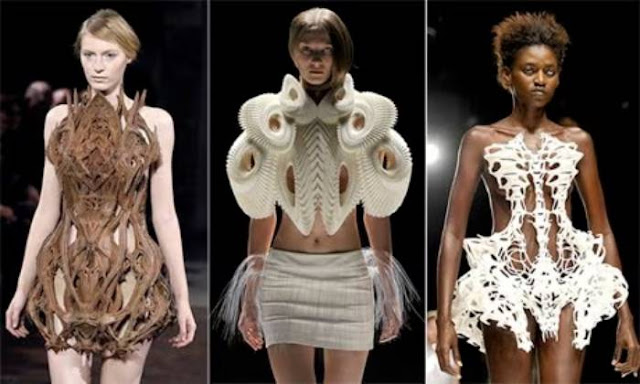Featured
- Get link
- X
- Other Apps
What is the relationship between creativity and fashion?
Creativity and fashion share an intricate and dynamic relationship, intertwining in a symbiotic dance that shapes the way individuals express themselves and perceive the world. At its core, fashion is not merely about clothing; it is a form of artistic expression, a medium through which individuals communicate their identity, culture, and emotions. Creativity is the driving force behind the evolution of fashion, fueling innovation, pushing boundaries, and challenging conventional norms.
Fashion, as a tangible manifestation of creativity, serves
as a canvas for designers to weave narratives, explore concepts, and experiment
with aesthetics. The synergy between creativity and fashion is evident in the design
process itself. Designers draw inspiration from various sources—art, nature,
history, and even societal issues—to create garments that transcend the
utilitarian aspect of clothing. The ability to envision and bring to life
unique, visually striking pieces requires a profound sense of creativity.
Innovations in fashion often stem from a desire to break
away from the mundane and conventional. Designers are constantly pushing the
envelope, seeking novel ways to interpret and redefine style. This relentless
pursuit of innovation is a testament to the inseparable link between creativity
and fashion. From groundbreaking fabric technologies to avant-garde
silhouettes, creative minds within the fashion industry are continually
reshaping the landscape of style.
Moreover, creativity plays a pivotal role in the evolution
of fashion trends. Trends are not arbitrary; they emerge from the collective
imagination of designers, influencers, and consumers alike. The cyclical nature
of fashion, where trends from the past are often revived with a modern twist,
showcases the timeless and adaptive nature of creativity within the industry.
Creative individuals draw inspiration from diverse eras, cultural movements,
and artistic expressions, fusing them into something entirely new and relevant.
Fashion is a medium for self-expression, and as such, it
thrives on individual creativity. Personal style is an amalgamation of one's
personality, experiences, and artistic inclinations. Whether it's through bold
color choices, unconventional pairings, or DIY alterations, individuals use
fashion as a tool to communicate their unique identity. The democratization of
fashion through social media platforms has further amplified this
individualistic approach, allowing people to showcase their creativity and
style to a global audience.
The runway serves as a stage for the convergence of artistic
visions and creative storytelling. Fashion shows are not merely displays of
clothing; they are immersive experiences that transport audiences into the designer's
world. The choreography, music, and thematic elements of a fashion show all
contribute to the overall narrative, emphasizing the multidimensional nature of
creativity within the realm of fashion. Designers often collaborate with other
creative professionals, such as choreographers, musicians, and set designers,
to bring their vision to life in a cohesive and impactful manner.
Beyond aesthetics, fashion has the power to convey social
and cultural messages. Creative expressions within the fashion industry can
challenge societal norms, advocate for inclusivity, and raise awareness about
pressing issues. Designers who infuse social commentary into their collections
use fashion as a platform for dialogue and change. This intersection of
creativity and activism underscores the transformative potential of fashion
beyond its aesthetic allure.
However, the relationship between creativity and fashion is
not without its challenges. The commercialization of the industry, fast
fashion, and the pressure to adhere to market trends can sometimes stifle
creativity. Designers may find themselves torn between artistic integrity and
commercial viability, leading to a delicate balancing act. Nonetheless, true
innovation often arises when designers navigate these challenges creatively,
finding ways to marry artistic expression with commercial success.
Conclusion
The relationship between creativity and fashion is intricate
and symbiotic. Fashion is a form of artistic expression that serves as a canvas
for designers and individuals alike to communicate, innovate, and challenge
societal norms. Creativity is the lifeblood of the fashion industry, driving
the design process, shaping trends, and influencing the way we perceive and
interact with clothing. As both a reflection of and a catalyst for cultural and
societal shifts, fashion continues to be a dynamic and ever-evolving
manifestation of human creativity.
- Get link
- X
- Other Apps
Popular Posts
Difference between Lycra and cotton Lycra
- Get link
- X
- Other Apps


Comments
Post a Comment